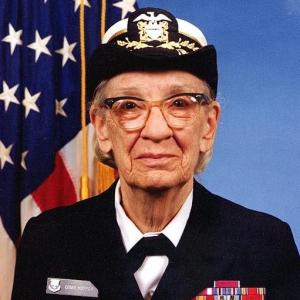%20(1).jpg?itok=_Z70vbk_)
Major Academic Events:
Vinton G. Cerf received his Bachelor's degree in mathematics in 1965 from Stanford University. He then moved to UCLA, obtaining his Master's degree in 1970 and Doctorate 1972 in computer science.
Contributions to Computer Science:
Cerf, known as the father of the internet, is most notable for his works on the TCP/IP protocols and the founding of the ISOC. He Co-wrote/developed the first TCP/IP protocols, along side his partner Bob Kahn. The protocols allowed for data packets to be transferred and received between networks. It allowed for super computers and normal desktop PC's to connect with each other. Furthermore, Cerf went on to later co-found the Internet Society or ISOC in an attempt to further promote the usage of the internet. Aside from those, Cerf also led the development of MCI Mail which became the first commercial emailing system to be connected to the internet.

Major Academic Events:
Grace Hopper earned her Bachelor's Degree from Vassar College and her Master's and PhD in mathematics from Yale.
Contributions to Computer Science:
Grace Hopper is most known for the development and creation of the FLO-MATIC and COBOL computer languages. She first wrote the FLO-MATIC language in 1955 for the UNIVAC I computer to use. Four years later in 1959, Hopper helped develop the COBOL language which was partly based off of the FLO-MATIC language. COBOL (and FLO-MATIC, which had basically merged into COBOL) was a English-like computer language and is still used in business and finance today. Besides that, Hopper also designed one of the first linkers, which was able to take multiple files and link them into one single, executable file and worked on the MARK I computer.

Major Academic Events:
Lee graduated from Oxford University in 1976
Contributions to Computer Science:
Tim Berners Lee is known for the creation of the hyperlink and the World Wide Web. Lee began his career as a software desginer for the Plessy Communications Company for two years. He then moved to work at CERN and it was there that he created the first Hyperlink. Twelve years later, while still at CERN, Lee invented was is now known as the World Wide Web (WWW) and the first browser to ever exist.